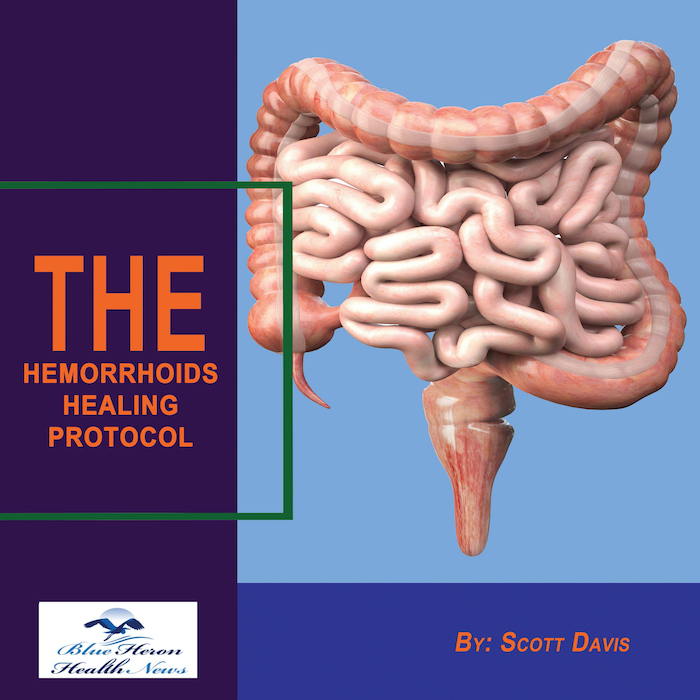
The Hemorrhoids Healing Protocol™ By Scott Davis Hemorrhoid healing protocol is a three-week online program that helps in treating and reducing hemorrhoids. It teaches gentle recipes and movements, natural and effective remedies that help in treating hemorrhoids.This program is not like the usual prescription medicines, it is a hell of a lot more than just those drugs. It focuses more on elevating the two main not so good habits that are connected to the Hemorrhoids. Overall the sole motive of this program is to remove the problem from its root instead of just treating the symptoms.
What are the surgical options for treating severe hemorrhoids?
When hemorrhoids become severe and do not respond to conservative treatments, surgical options may be considered. These procedures are generally recommended for patients with large internal hemorrhoids, significant bleeding, or hemorrhoids that have prolapsed (protruded outside the anus) and cannot be reduced manually. Here are the common surgical options for treating severe hemorrhoids:
1. Hemorrhoidectomy
- What It Is: Hemorrhoidectomy is the surgical removal of hemorrhoids. It is the most effective treatment for severe internal or external hemorrhoids, especially those that are prolapsed or thrombosed (containing a blood clot).
- Procedure: During the procedure, the surgeon removes the hemorrhoidal tissue by making incisions around the affected area. The incisions are then either sutured closed (closed hemorrhoidectomy) or left open to heal naturally (open hemorrhoidectomy).
- Effectiveness: This procedure provides long-term relief and is considered the most definitive treatment for severe hemorrhoids.
- Recovery: Hemorrhoidectomy typically requires a longer recovery time (2 to 4 weeks), and patients may experience pain and discomfort during the healing process.
- Risks: Risks include pain, infection, bleeding, and difficulty with urination or bowel movements during recovery.
2. Stapled Hemorrhoidopexy (PPH – Procedure for Prolapse and Hemorrhoids)
- What It Is: Stapled hemorrhoidopexy is a less invasive surgical option than traditional hemorrhoidectomy, and it is often used for prolapsed hemorrhoids.
- Procedure: The surgeon uses a circular stapling device to reposition the prolapsed hemorrhoidal tissue back into its normal position inside the rectum. The procedure also cuts off the blood supply to the hemorrhoids, causing them to shrink.
- Effectiveness: This procedure is effective for treating prolapsed hemorrhoids and is associated with less postoperative pain compared to hemorrhoidectomy.
- Recovery: Recovery time is usually quicker than with hemorrhoidectomy, often taking about 1 to 2 weeks.
- Risks: Risks include recurrence of hemorrhoids, bleeding, infection, and in rare cases, complications like rectal prolapse or fistula formation.
3. Hemorrhoidal Artery Ligation (HAL) / Doppler-Guided Hemorrhoidal Artery Ligation (DG-HAL)
- What It Is: HAL is a minimally invasive procedure that involves cutting off the blood supply to the hemorrhoids by ligating (tying off) the arteries that supply blood to the hemorrhoidal tissue.
- Procedure: A Doppler ultrasound probe is used to locate the hemorrhoidal arteries, and the surgeon ties them off to reduce blood flow to the hemorrhoids. This causes the hemorrhoids to shrink over time.
- Effectiveness: HAL is effective for treating internal hemorrhoids and is often used for patients with grade II or III hemorrhoids (moderately severe). It causes less pain than hemorrhoidectomy and offers a quicker recovery.
- Recovery: Patients typically recover within a week, and the procedure is associated with less postoperative pain.
- Risks: Potential risks include incomplete resolution of symptoms, recurrence of hemorrhoids, and mild discomfort during recovery.
4. Rubber Band Ligation (RBL)
- What It Is: Rubber band ligation is a non-surgical procedure commonly used to treat internal hemorrhoids, particularly those that are smaller or moderately severe.
- Procedure: The surgeon places a small rubber band around the base of the hemorrhoid to cut off its blood supply. This causes the hemorrhoid to wither and fall off within a week or so.
- Effectiveness: This procedure is effective for grade I to III internal hemorrhoids and is less invasive than surgical options.
- Recovery: The recovery period is short, and most patients can return to normal activities within a day or two.
- Risks: Risks include pain, bleeding, and infection. In rare cases, complications such as severe bleeding or hemorrhoidal thrombosis may occur.
5. Sclerotherapy
- What It Is: Sclerotherapy is a minimally invasive procedure where a chemical solution is injected into the hemorrhoid, causing it to shrink.
- Procedure: A sclerosant solution is injected directly into the hemorrhoidal tissue, which causes it to harden and shrink over time.
- Effectiveness: Sclerotherapy is effective for smaller, internal hemorrhoids and is usually used for grade I or II hemorrhoids. It is less commonly used for severe cases but may be an option for patients who cannot undergo surgery.
- Recovery: Recovery is quick, with minimal discomfort, and patients can usually resume normal activities the same day.
- Risks: Risks include mild pain or discomfort, infection, and the possibility of incomplete treatment or recurrence of hemorrhoids.
6. Infrared Coagulation (IRC)
- What It Is: Infrared coagulation is a procedure that uses infrared light to generate heat and coagulate the blood vessels feeding the hemorrhoid, causing it to shrink.
- Procedure: A small probe delivers infrared light to the hemorrhoid, cutting off its blood supply and causing it to shrink and scar over.
- Effectiveness: IRC is effective for small to moderate internal hemorrhoids and is typically used for grade I or II hemorrhoids.
- Recovery: The recovery is fast, with little discomfort, and most patients can return to their normal activities soon after the procedure.
- Risks: Risks include mild pain or discomfort, incomplete resolution of hemorrhoids, and possible recurrence.
Summary:
- Hemorrhoidectomy and Stapled Hemorrhoidopexy are more invasive surgical options for severe hemorrhoids, offering long-term relief but with longer recovery periods.
- Hemorrhoidal Artery Ligation (HAL) and Rubber Band Ligation (RBL) are less invasive, with shorter recovery times and fewer complications, but may not be as effective for very severe hemorrhoids.
- Sclerotherapy and Infrared Coagulation (IRC) are minimally invasive options best suited for smaller hemorrhoids, with quicker recovery times but limited use for severe cases.
The choice of procedure depends on the severity of the hemorrhoids, the patient’s overall health, and the surgeon’s recommendation.
The Hemorrhoids Healing Protocol™ By Scott Davis Hemorrhoid healing protocol is a three-week online program that helps in treating and reducing hemorrhoids. It teaches gentle recipes and movements, natural and effective remedies that help in treating hemorrhoids.This program is not like the usual prescription medicines, it is a hell of a lot more than just those drugs. It focuses more on elevating the two main not so good habits that are connected to the Hemorrhoids. Overall the sole motive of this program is to remove the problem from its root instead of just treating the symptoms.
